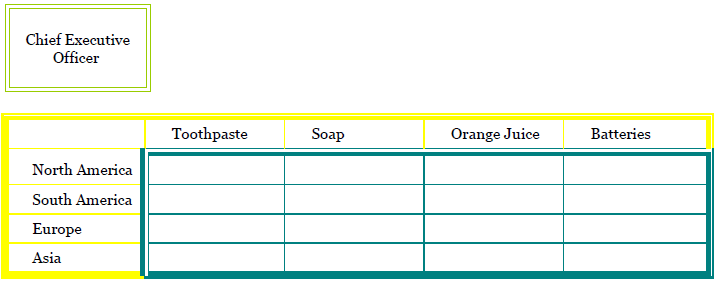A matrix structure is often adopted in organizations that would like to optimize decisions across multiple organization dimensions. In other words, they would like to achieve economies of scale where appropriate, but do not want to lose the ability to respond to product/customer and geographic needs more effectively.
A matrix organization simultaneously utilizes two or more dimensions (product, geographic, function, etc.) to organize the company’s work. In this case, two or more dimensions may have direct links to the head of the organization (see Figure 14.12) and key individuals throughout the organization may actually report to more than one dimension. As can be seen in Figure 14.12, the orange juice product manager reports to the head of the organization, as does the head of the finance function. In this example, the finance officer in the orange juice product group reports to two individuals: the head of finance and the head of the orange juice group. At the same time, a geographic dimension may require that the function and product heads interact as coequals with any number of country managers or regional heads as well.
Advantages: The matrix allows functional efficiencies to be achieved while also allowing for the management of discrete product lines. Product managers remain focused on specific customer and product issues, yet can tap into the specialized support systems offered by strong functions. Where a geographic dimension is included in the structure, country managers or other local personnel can devote their attention to the development of location specific strategies. Communication and information sharing may be facilitated through the multiple dimensions.
Disadvantages: The matrix is complex and often involves additional coordination costs. Confusion and ambiguity may result from multiple reporting relationships as a single individual may receive conflicting direction from their various supervisors.

- 3885 reads






